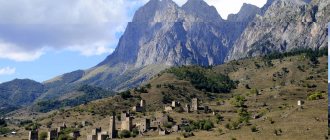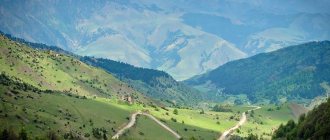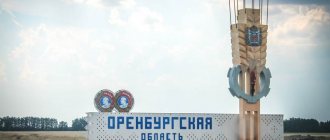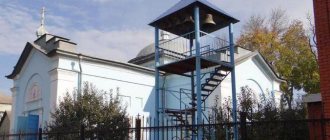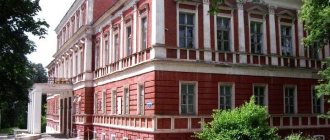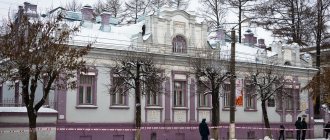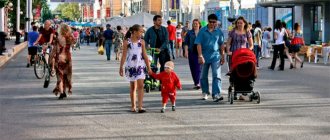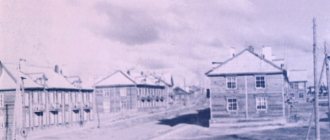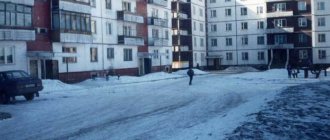see also
- Ingushetia
- Symbols and sights of Ingushetia
- Cities of Russia
| [ + ] Cities by regions of Russia | |
| Cities of the North-West (NWFD) | St. Petersburg (and its cities) • Leningrad region (historical Staraya Ladoga) • Arkhangelsk region • Vologda region • Kaliningrad region • Karelia • Komi • Murmansk region • Nenets Autonomous Okrug • Pskov region |
| Cities of the Volga region (Volga Federal District) | Bashkortostan • Volgograd region • Kalmykia • Kirov region • Mari El • Mordovia • Nizhny Novgorod region • Orenburg region • Penza region • Perm region • Samara region • Saratov region • Tatarstan • Udmurtia • Ulyanovsk region • Chuvashia |
| Cities of Southern Russia (SFD) | Sevastopol (including Inkerman) • Republic of Crimea • Adygea • Astrakhan region • Krasnodar region • Rostov region |
| Cities of the North Caucasus (NCFD) | Dagestan • Ingushetia • Kabardino-Balkaria • Karachay-Cherkessia • North Ossetia - Alania • Stavropol Territory • Chechen Republic |
| Cities of the Urals (Ural Federal District) | Kurgan region • Sverdlovsk region • Tyumen region • Khanty-Mansi Autonomous Okrug - Yugra • Chelyabinsk region • Yamalo-Nenets Autonomous Okrug |
| Cities of Siberia (Siberian Federal District) | Altai Republic • Altai Territory • Irkutsk Region • Kemerovo Region • Krasnoyarsk Region • Novgorod Region • Novosibirsk Region • Omsk Region • Tomsk Region • Tyva • Khakassia |
| Cities of the Far East (FEFD) | Amur Region • Buryatia • Jewish Autonomous Region • Trans-Baikal Territory • Kamchatka Territory • Magadan Region • Primorsky Territory • Sakha (Yakutia) • Sakhalin Region • Khabarovsk Territory • Chukotka Autonomous Region |
| see also | Cities of the DPR, LPR, Transnistria, South Ossetia • Regions of Russia • Cities of Russia |
Ingushetia is the “youngest” republic of the Caucasus
The Republic of Ingushetia is located in the northern part of the Greater Caucasus Range. Its borders are adjacent to Georgia, North Ossetia and the Chechen Republic. Despite the fact that it is considered the smallest Russian region in terms of area, it is original and can be proud of its history. And Ingush cities are an integral part of it.
The republic was formed only in 1992. But this does not mean that the territory was empty before. Moreover, people already lived here in the 1st millennium BC. Archaeologists called this culture Koban, after the name of the village in which excavations were carried out and interesting evidence of the residence of an entire people was discovered.
During the Middle Ages, local tribes united and began to be called Dzurdzuks. Even after Islam penetrated the Caucasus and the era of Islamic culture began, on the territory of the future republic people lived according to pagan laws and customs. The Ingush themselves settled mostly in the mountains, and their return to the plains began only in the 16th century. At that time, cities as such did not exist - there were scattered settlements.
After the Caucasus found itself in the zone of interests of the Russian Empire, not only the gradual settlement of the Ingush territories by Russians began, but also the mutual penetration of both cultures. Ingushetia officially became part of Russia only in 1770, when the historic Act of Oath of Allegiance to the Empire was signed - six large Ingush clans took it at once. After this, the region began its development, and the entire twentieth century became a particularly significant period for it.
Ingush cities and their features
Those who wonder how many cities there are in Ingushetia will be surprised - after all, there are only five of them in the republic, of which one became a city of republican significance only in 2016. However, this fact does not mean that before all five settlements were given city status, they were nothing. Each has its own history, closely connected both with the republic itself and with the influence of greater Russia.
Here is a list of cities in Ingushetia today:
- Magas
- Nazran
- Karabulak
- Sunzha
- Malgobek
What are Ingush cities and what are the features of each of them? It is worth studying the history of each of them in more detail.
- Magas.
This is the capital of the republic, and one of its youngest cities. Its name translated from Ingush sounds poetic - “city of the sun”. Once on this territory there was another Magas - the capital of Alanya. Until now, archaeologists periodically carry out excavations here; within the city’s borders there are over two dozen fortifications dating back to the first millennium.
The modern city emerged quite recently - the first stone of its foundation was laid just in 1994. And on April 15 of the same year, Boris Yeltsin signed a decree launching the process of building the Republic of Ingushetia. Today, April 15 is considered City Day and is widely celebrated by the population. Since this city was originally conceived as an administrative center, there will not be any large enterprises in it. But it is very cozy and always welcomes guests. It is home to about 7,000 people, most of whom are Ingush.
- Nazran.
The oldest and one of the largest cities in the region in terms of population. There are more than 113 thousand people here, which is a record for the republic. Nazran was founded in 1781 as a Russian fortification. Later, a settlement was located next to it, a school for children appeared, and at the end of the 19th century a railway station was built. Before the decision was made to give Magas capital status, the capital of the region was located in Nazran. Currently, there are several industrial enterprises operating here, and there is a developed infrastructure.
- Karabulak.
It is located on the left bank of the Sunzha River. The name itself is translated from Turkic as “black spring”; the city is the second most populous in the republic - approximately 40 thousand residents live here. Karabulak cannot be called a young city; it was founded in 1859 as a Cossack village.
This fact once again proves how intricately intertwined the ties between Russia and the North Caucasus were. By the way, Karabulak became a city of republican significance in 1995, before which it was considered a village. Before perestroika, both Ingush and Russians lived here in approximately equal proportions. However, after ethnic clashes began in 1991, the Russian indigenous population began to leave the city. Today, almost 98% of Karabulak are Ingush.
- Sunzha.
This settlement was founded in 1845 by the Cossacks during the Caucasian War. Initially it was the village of Sunzhenskaya, during the war in 1852 it was named after Major General N.P. Sleptsov, and later in 1939 it was renamed Ordzhonikidzevskaya. In 2015, it was renamed Sunzha with the status of an “urban-type settlement”, and in 2016 it became a city.
Thus, this is the newest city in Ingushetia. The population is about 65 thousand people who work at several enterprises in the city. By the way, it was in Sunzha that the Ingush State University was opened; now only a few small buildings remain there, the rest have been moved to Magas. Among the industrial enterprises, a creamery and cheese factory is located here.
- Malgobek.
Until the 30s of the twentieth century, it was a small village of Voznesenskoye (the name also indicates its Russian origin). However, after oil deposits were discovered in the surrounding area, the area began to be actively populated and developed. First, Voznesenskoye was renamed the village of Malgobek, and in 1939 it received the status of a city.
Malgobek is quite young, the people who started building it are still alive. Since the city arose thanks to oil development, the city-forming enterprise is an oil concern. Today Malgobek continues to expand and has a great future. In 2007 it received the honorary title “City of Military Glory”.
Sights of the region
Ingushetia is a fairly young republic, which is confirmed by the history of its cities. However, this land is ancient and people lived here centuries ago. If you drive through villages and cities, you can see a lot of interesting things.
For example, near Magas there is “Acham-Boarz” - a settlement where tourists try to go on excursions. Here, in the capital, is the tallest Ingush building, the Tower of Concord.
And in Nazran a Memorial of Memory and Glory was erected. It was erected in due time so that residents and guests of the republic would remember the heroes of the wars in which Russia was forced to take part, and the people who fell victims of the repressions of 1944. In addition, on the territory of the city there is the Borga-Kash mausoleum, built in the 15th century, and you can also see an ancient Russian fortress.
Those who come to Karabulak can visit the Republican Museum of Fine Arts. In the same city there is a church of the icon of the Kazan Mother of God - this is one of the Orthodox churches that exist in very small numbers in Ingushetia. But the main decoration of the cities of Ingushetia is, of course, nature. It is precisely this that serves as the background against which all five cities become a real necklace of a young, but such a promising region.
Nazran is the largest city in Ingushetia
Nazran (Ingush: Nana-Nasare) is a city in Russia, the administrative center of the Nazran district of Ingushetia, the largest city of the republic. The city of Nazran forms the urban district. Nazran was founded in 1781. In official documents it was first mentioned in 1810 as the Nazran redoubt. In 1817 and 1832, the Nazran fortress was rebuilt and strengthened. For repelling the attack of Imam Shamil on Nazran in April 1841, the Nazran Society was awarded the St. George Banner by Emperor Nicholas I. Nazran is the largest city in Ingushetia, with a population of nearly 100 thousand people. Nazran received city status back in 1967, and after the collapse of the Chechen-Ingush ASSR it even temporarily served as the capital of the young Ingush Republic. But in 2000, the newly built Magas took over the functions of the capital. However, Nazran and Magas are located at a purely symbolic distance from each other - only 4 km - so, driving along the highway, you may not notice where Nazran ended and Magas began. However, it is difficult to imagine more dissimilar cities. Magas is a capital showcase city with a population that does not even reach the status of an urban village. And crowded Nazran rather resembles a greatly expanded cluster of villages. The private sector occupies most of the city's territory, clearly displaying the entire spectrum of residents' well-being: from very modest houses to red-brick mansions with blank fences in the Center-Kamaz area. Typical Soviet and post-Soviet buildings are also present, so where would we be without it? If Magas can be called a white-collar city, then Nazran is a republican center of industry and trade. Here, crowded markets are noisy, a railway station and bus station receive passengers, factories left over from Soviet times survive, and drivers swear at unregulated intersections. Here you can bargain for a handmade carpet and eat in a cafe “for your own people.” There is also an architectural monument worthy of attention in Nazran - a fortress of the early 19th century, the Nazran Redoubt. Rebuilt in stone, in 1841 the fortress was able to repel the attack of Imam Shamil, but the Soviet urban planning pressure was stronger. All ancient buildings inside the fortress were demolished for the construction of a city hospital. The fortress wall was also damaged. Near the fortress there are two cemeteries - a large Muslim one, filled with traditional vertical gravestones, and an Orthodox one with the occasional lopsided cross. It is not surprising - unlike the villages founded in Ingushetia by the Terek Cossacks, in Nazran the Russian population has never been large. Unlike the purely business Magas, Nazran is the cultural capital of the republic. Several museums are open here, the largest of which is the Malgasov Museum of Local Lore, which has a unique collection of ancient artifacts. There is also a National Drama Theater (named after Bazorkin), which performs performances in the city cultural center. In 1997, at the exit from the city, a Memorial complex to the victims of repression was built with its own exhibition and the main monument in the form of nine Ingush ancestral towers, pressed together with barbed wire. In general, Nazran is similar to an ordinary one, only a very large urban village with a set of authentic attractions and several centers of culture. But the “village” is special: this is Ingushetia, the region is quite tense. In Nazran this is felt much more strongly than in sterile and calm Magas. Complete safety cannot be guaranteed here. But we confirm that guests in Nazran are treated kindly and will always come to the rescue. IMPORTANT Since the terrorist threat remains in the region, intensified road raids, when every second car is stopped and searched, and a huge number of police checkpoints have become part of daily life in Nazran. Visitors prefer to walk around Nazran accompanied by locals. Not because there have been cases of attacks on tourists or business travelers, but because it’s safer this way. Nazran is located almost on the border with North Ossetia. If you plan to cross the border between the republics, you will need to present your passport and car documents at the checkpoint. No additional documents or passes are needed. LOCAL FEATURES Nazran is a fairly large transport hub with its own railway station, bus station and even an airport, if you close your eyes to the formal connection of the Magas airport to Magas. For this reason, Nazran, while not being particularly attractive to discerning tourists, is not deprived of tourists: the city serves as a transit point on the way to the historical Dzheirakh region of the republic, known as Mountain Ingushetia. Events and holidays The last Sunday of October - City Day What to bring from Nazran Handmade carpets, Ingush honey (acacia, herbs), felt products, burkas, hats. If you want to purchase some of the local edged weapons (daggers, blades), be sure to ask for the product passport. Without it, problems may arise at the border. Only in Nazran (and more recently in Pyatigorsk) can you purchase truly unique products made from specially crafted fish skin. HISTORY Nazran is an ancient city, but not ancient: the date of its foundation is considered to be 1781. Then the Ingush settlements between the Sunzha and Nazranka rivers were marked on the map by Lieutenant Colonel of the Russian Army, Divisional Quartermaster L.L. Shteder. That year, officer Steder noted a lot of things: two years before the Russian troops marched into Georgia, the high command of the Caucasian military line sent Steder to the mountainous regions of the Central Caucasus to draw up a military-geographical map of the region, determine the most convenient and shortest route for the proposed military-strategic road from the North Caucasus to Georgia, to conduct various kinds of mineralogical surveys, as well as to study and persuade the highlanders of the Central Caucasus to side with Russia. Shteder visited Chechnya, Ingushetia, Ossetia and the mountainous regions of Georgia, compiled the most detailed and perfect map of the regions for its time, and also collected rich ethnographic material, which is still actively used by researchers to this day. Based on the results of this, in general, reconnaissance mission of Städer, a travel diary in German was published in Leipzig in 1796, which was later translated into Russian: “Diary of a journey from the border fortress of Mozdok to the interior of the Caucasus, undertaken in 1781.” At the end of the 18th century, the strategic interests of Russia and the urgent needs of the Ingush came together in Nazran. According to legend, the idea of settling the flat Nazran area initially arose from the elders of the Khakhale society. With the words “Work for us,” they appointed Kartskhal Ortskhoevich Malsagov in charge of lowland expansion. One of the versions of the legend was recorded by N. Yakovlev: “About 200 years ago, an Ingush named Ortskha Kartshal, from the descendants of Malsag, came out of the mountains, from the village of Ongusht, and was the first to settle on the banks of “mother Nazran,” the heart of the present-day lowland Ingushetia. Wanting to establish a settlement here, he brought a white bull intended for sacrifice and began to pray. During the prayer, the bull himself knelt down, and rain poured from the sky, which, according to the Ingush, was a manifestation of the mercy of the deity and served as an omen that this area would not be taken from the battle by enemies. Here Kartshal founded Nazran. He himself was a hero: he turned the mill wheel with his hands, and, having put fetters on the horse, he alone lifted it from the ground. Kartshal fought with Chechens, Ossetians, Kabardians for the occupied land and never let Nazran out of his hands. Little by little, his enemies began to make friends with him, and the Ingush flocked to him from the mountains and settled near him.” This significant event took place in the middle of the 18th century, it is impossible to say more precisely, legends are an imprecise thing. So the history of Nazran is usually counted from 1781, when the fact of the existence of Ingush settlements on the banks of “Mother Nazran” was recorded by the scrupulous intelligence officer Steder. Mentioned in legend, Ongusht (Angusht, now the village of Tarskoye in North Ossetia) is a foothill village founded in the 17th century, the first settlement of the Ingush outside the historical zone of residence (now the Dzheirakhsky district in Mountainous Ingushetia). Ongusht, or Greater Ingush, gave the Russian name to the entire people (the self-name of the Ingush is Galgai). Near Ongushta in 1770, Ingush elders took an oath of allegiance to Russia, confirming their voluntary entry into the Russian Empire. The process of the Ingush entering the plain in search of fertile lands, which began in the 17th century, continued at the turn of the 18th - 19th centuries. According to the agreement of 1810 between the Russian administration and influential representatives of six Ingush clans inhabiting the Nazran region, the residents of Ingushetia, who became subjects of the Russian Empire, were recognized with the right to use the lands on the right bank of the river. Terek and to the Tersky ridge. So the first mention of Nazran in official documents dates back to 1810. Soon after the signing of the historical treaty, the construction of fortifications with a permanent garrison began in the neighborhood of Nazran. In the fall of 1810, the Nazran redoubt was founded. By 1812, there were 1006 households in the village of Nazran. The Nazran redoubt was rebuilt and strengthened three times: in 1817, 1832 and 1842. In 1841, the Nazran garrison repelled the attack of Imam Shamil, for which Nicholas I awarded the Nazran Society with the St. George Banner. However, in 1858, an uprising broke out in Nazran and its environs, provoked by the government’s decision to enlarge Ingush settlements, driving residents of small scattered villages into them. The uprising was suppressed, and the status of an aul was assigned to the large village of Nazran. In 1868, the first secular educational institution on the territory of Ingushetia, the mountain school, opened in Nazran. In 1893, a railway station was built in the city, and regular railway service opened in 1894. Today the Nazran-Grozny line no longer exists - it was dismantled during the Chechen War. In 1944, after the brutal deportation of Ingush and Chechens to Central Asia, the Chechen-Ingush Autonomous Soviet Socialist Republic was abolished, and Nazran became part of North Ossetia. The city not only changed its administrative affiliation, but also changed its name to Costa-Khetagurovo (in honor of the poet, founder of Ossetian literature K.L. Khetagurovo). In 1957, after the restoration of the Chechen-Ingush Autonomous Soviet Socialist Republic, the village was returned to its original name Nazran. In 1967, Nazran's status increased to city status. The next milestone in the history of Nazran was the collapse of the USSR and, as a consequence, the collapse of the Chechen-Ingush Autonomous Soviet Socialist Republic. Until 2000, Nazran served as the temporary capital of the republic, until capital functions were transferred to the new capital, Magas. According to one version, the city owes its name to the peculiarities of the eastern pronunciation of the word “Nazareth”, which is strange: what kind of Nazareth in an area that by the 19th century had already finally chosen Islam as its religion? The second version of the origin of the city’s name is extremely prosaic: from the Nazranka River, which flows next door.
Cities[ | ]
| № | Name | city of republican significance[3] | population (persons) | foundation first mention | city status | coat of arms | former names |
| 1 | Karabulak | Karabulak city | ↗43 549[2] | 1859 | 1995 | Karabulakskaya (until 1962) | |
| 2 | Magas | Magas city | ↗13 601[2] | 1995 | 2000 | ||
| 3 | Malgobek | Malgobek town | ↗39 096[2] | 1934 | 1939 | Voznesenskoye (until 1934) | |
| 4 | Nazran | Nazran city | ↗124 169[2] | 1781 | 1967 | Costa Khetagurovo (1944-1959) | |
| 5 | Sunzha | Sunzha city | ↗66 807[2] | 1845 | 2016 | Sunzhenskaya (until 1852), Sleptsovskaya (1852-1939), Ordzhonikidzevskaya (1939-2016) |
